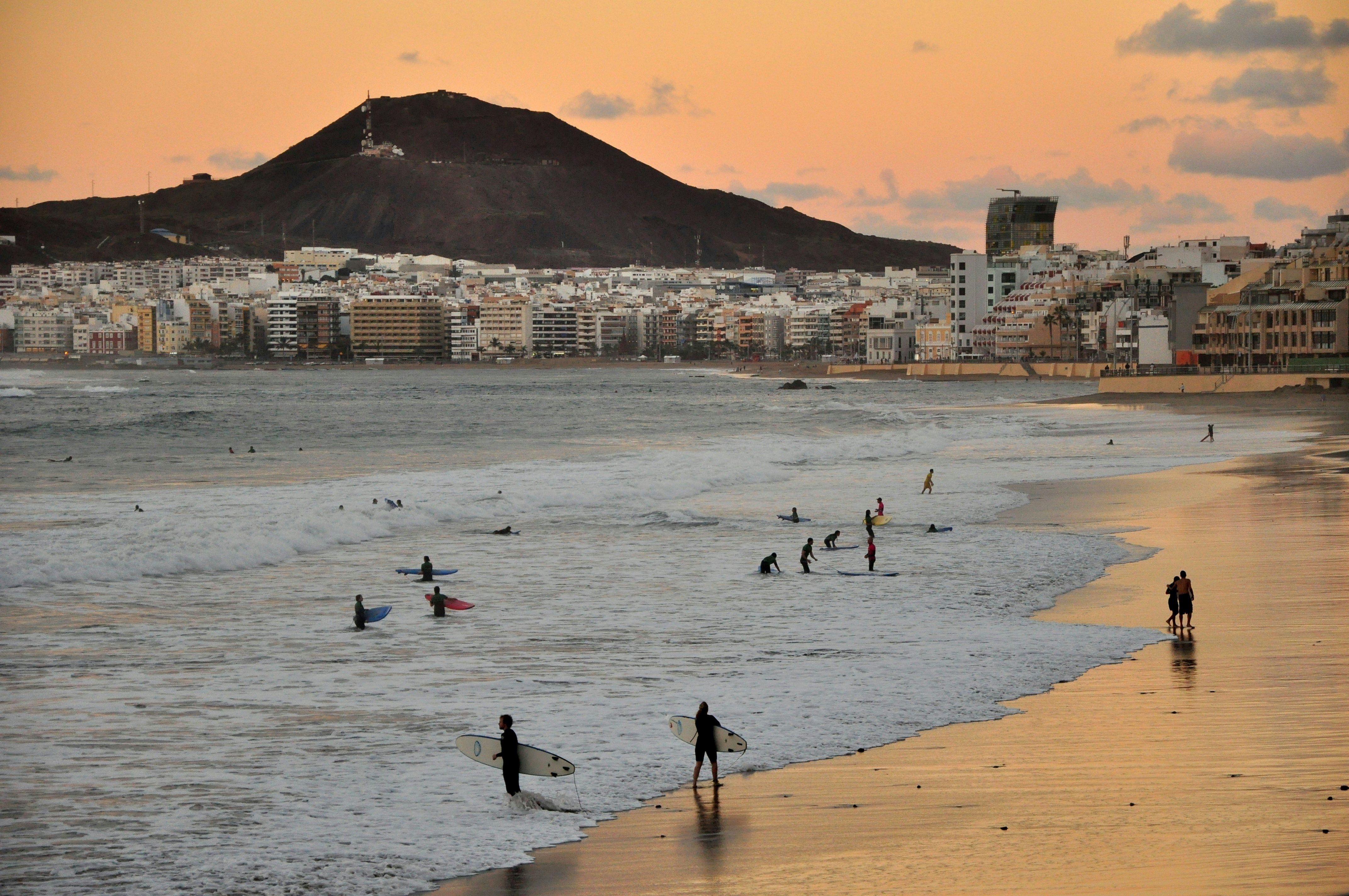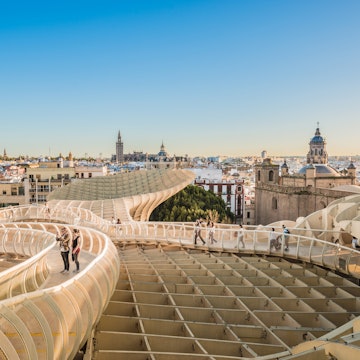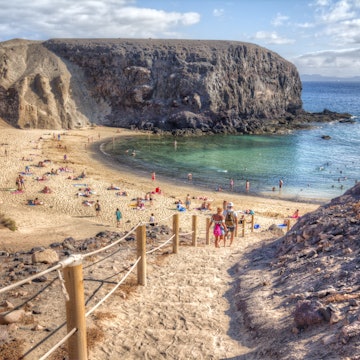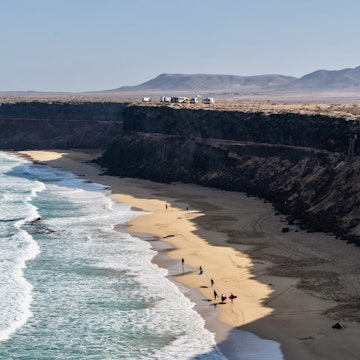
Tenerife or Gran Canaria: Deciding which Canary Island outpost is best for you



Deciding between Tenerife and Gran Canaria? We've got you covered. L: Shutterstock / R: Zdenek Matyas/Shutterstock
If you're planning a trip to any of the seven Canary Islands, expect to find incredible beaches, epic hikes, fresh-from-the-farm-or-ocean meals and the best of Spanish culture. A two-hour ferry ride apart, Tenerife and Gran Canaria are two of the most beautiful islands to consider, each with their own personalities and opportunities for adventure. Leverage our experts' advice to map out your ideal trip to this lovely Spanish archipelago.
Tempted by Tenerife
Based between Barcelona and Málaga, Isabella Noble has been exploring Tenerife for years over many extended trips to the sunny Canaries. She is the author of Lonely Planet’s new Pocket Tenerife, as well as the Tenerife chapter of the new Canary Islands guidebook.
It’s no surprise that Tenerife has long been the most popular island in the Canaries. From the undulating lava-formed shoreline to the hazy heights of El Teide, even just the sweeping variety of its landscape is endless and enchanting.
The spectacular Parque Nacional del Teide, a UNESCO-listed place of haunting beauty literally unlike anywhere else in the world is a destination in its own right. Few travel moments can beat catching a first glimpse of Spain’s tallest peak, El Teide, surrounded by a moon-like valley of twisted lava and, if you’re here in spring, all kinds of curious Canarian flora. Or better yet, hike all the way to El Teide’s summit – at a whopping 3718m high – to see the world sprawled out below.

Outdoor oasis
No other Canary Island has such an impressive line-up of things to do. Fancy learning to kitesurf? Head to laid-back El Médano. Keen to see the archipelago’s finest Canarian-style architecture? La Laguna has you covered with its World Heritage old town or take a stroll around low-key Garachico and lovely La Orotava. Tempted by the deep-blue Atlantic? Pick from diving, kayaking, paddle boarding and more. For the simple thrill of swimming in the ocean, there are heavenly natural pools all over the island; I always squeeze in a dip at gorgeous Bajamar, beneath the north coast’s surf-washed cliffs. Or take your pick from the countless honey-colored beaches, like mountain-framed Playa de las Teresitas and El Médano’s gorgeous surfy strands.
Hikers will be blown away by Tenerife’s wealth of trails, whether you choose to roam through the elevated cloud forests of the Anaga mountains (a UNESCO Biosphere Reserve) or tackle coastal routes with stops at hidden volcanic-sand coves. This is one of the best places in Europe to spot whales and dolphins in the wild too, thanks to the protected 2000-sq-km Whale Heritage Area sprawling between west Tenerife and neighbouring La Gomera, with its resident population of short-finned pilot whales.
Don't miss a meal
Tenerife also happens to be one of the Canaries’ leading wine-makers, rivalled only by Lanzarote. Mostly small, artisanal-style vineyards craft bold whites and reds from dramatic hillside vineyards going back centuries, and you can easily get a taste at top wineries like Viñátigo and Tajinaste. Some of the highest – and oldest – vines in Europe are right here among Tenerife’s five respected Denominaciones de Origen (DOs). And that’s before we’ve even mentioned the island’s fabulous food scene: lively farmers markets crammed with local goodies such as cheese, honey and tropical fruit. Pretty plazas are dotted with buzzy breakfast kiosks and laid-back guachinches serving classic dishes in garages, gardens and fincas. Then there’s the wave of high-cuisine kitchens ambitiously reimagining Canarian flavors; more than half of the archipelago’s Michelin-starred restaurants are in Tenerife.
Urban escape
And how about some big-city buzz? Gran Canaria might have Las Palmas, but I love wandering around Tenerife’s greenery-filled capital Santa Cruz, stopping for coffee on squares shaded by enormous laurel trees, picking up ingredients at the 1940s Mercado de Nuestra Señora de África, and popping into some of the Canaries’ most inspiring art-world hubs (start with the cutting-edge TEA). Perhaps you’re tempted by Gran Canaria’s deservedly popular nightlife scene, but Tenerife knows how to throw its own fiery party, especially around the LGBTQ+ hubs of Puerto de la Cruz and Costa Adeje and vibrant, bar-packed La Laguna. And did I mention that Santa Cruz hosts Spain’s greatest Carnaval each winter?

Epicenter of art and nature
It’s impossible not to be blown away by Tenerife’s thriving crafts scene, which takes in unique arts like the intricate roseta (a style of lace embroidery famous especially in Vilaflor and La Orotava) and all kinds of beautiful ceramics, often made using techniques inherited from the indigenous Guanche communities. And there are plenty of creative designs by contemporary tinerfeño artisans too.
Overall though, it’s Tenerife’s quieter corners that tempt me back, like the rugged Parque Rural de Teno, where you can walk for hours through palm-filled valleys curled into the northwest end of the island. Go for a swim off one of the tiny pebble coves at magical Punta de Teno here – with a candy-striped 19th-century lighthouse gazing out on La Gomera and the basalt cliffs of Los Gigantes swooping down to meet the Atlantic. You’ll instantly feel the pull of this magnetic island, just like I do.
Gran Canaria's understated draw
Co-author of the Lonely Planet guide to the Canary Islands, Ross Clarke has lived in Gran Canaria several times over the past 20 years and can usually be found hopping between the archipelago’s islands, supping the best local wine.
If Tenerife is the showy youngster of the archipelago, then Gran Canaria is its more mature sibling. That’s not to say that the island is boring, far from it. Rather, it doesn’t feel the need to shout in superlatives like its neighbor, as Gran Canaria’s beauty and charm lies in its compact nature. You can easily circumnavigate the island in a single day, from desert-like sands to pine-covered mountains, exhilarating cities to lush, tropical valleys. It’s also a firm favorite with LGBTIQ+ travelers who flock here every year for both Pride and Winter Pride celebrations, as well as the year-round inclusive atmosphere. Oh, and it has the world’s only LGBTIQ+ shopping center.
For me, whether it’s standing on the undulating sand dunes of Maspalomas, stargazing on the verdant central peaks, or wandering the old town of Vegueta and sipping coffee in a laid-back café watching the world go by, Gran Canaria will always feel like home. You can't help but feel the same after visiting this colorful, all-embracing Atlantic paradise.

Capital Gains
For many years, the island’s vibrant capital city Las Palmas de Gran Canaria was considered to be the city with the best climate in the world. But that’s not the reason (not the only one at least) why you should visit. It’s the most populated urban area in the Canaries, and people are often surprised to hear that it’s Spain’s ninth-largest city. Las Palmas de Gran Canaria is incredibly cosmopolitan, with cool rooftop bars, innovative restaurants, museums, art galleries and shops – not to mention its two enchanting city beaches. While Santa Cruz de Tenerife might claim the largest carnival title, Las Palmas de Gran Canaria more than holds its own with no fewer than four carnival queen competitions – don’t miss the famous drag queen contest – and a parade route the full length of the city down its main artery, Calle León y Castillo.
Wonder of the world
There are still so many unanswered questions about the island’s pre-Hispanic inhabitants who lived here in relative isolation for more than 1500 years, but there remains evidence of their lives across Gran Canaria. There are more sites here than on the other islands, from the cave houses of the Guayadeque ravine, the wondrous painted cave of Gáldar, the burial sites of Maipés and Arteara, the soaring monolith of Roque Bentayga, the grain store of Cenobio de Valerón, and perhaps the most intriguing, the Risco Caído. This area of dwellings and spiritual sites houses one particular phenomenon: A tunnel allows the sun to cast light on an interior wall between the spring and autumn equinoxes. The shapes it creates tell the story of human fertility and demonstrate the close connection the original inhabitants had with the natural world.

Training Ground
People don’t automatically think of Gran Canaria for hiking and outdoor pursuits – other than sunbathing on its glorious beaches – but the island is ripe for adventure. Many top athletes are venture to the island to test their mettle against the pine-covered mountains and picturesque central peaks. The Transgrancanaria race has become one of the most popular on the ultramarathon race calendar, where competitors challenge themselves to traverse the volcanic landscape each February. It’s not just for pros; Gran Canaria is set up for getting outdoors, whether it’s trekking to the Roque Nublo, Canary bird spotting, studying the stars or capturing the best images using the island’s majestic light.
Packs a (rum) punch
Tenerife has often been said to be the foodie island of the bunch, but I would warrant Gran Canaria is simply simmering under the radar. Last year, Tenerife’s own lauded chefs, the Padrón brothers, told me in an interview that Las Palmas de Gran Canaria must have the most exciting culinary scene in Spain right now. And I agree. There’s been a concerted effort by home-grown chefs to innovate using local products from the land and sea. Chef Borja Marrero does just that in his restaurant Muxgo – which is one of the reasons it won the archipelago’s first Michelin Green star – awarded for sustainable restaurant practices.
Rum has been produced on the island for more than a century. Visit one of the original factories still producing it today, Arehucas Distillery in Arucas, and don’t miss trying the famous ron miel, or honey rum. Gran Canaria also has the only dedicated wine route in the islands, the Ruta del Vino de Gran Canaria. It’s a self-guided tour of vineyards, wineries, restaurants and bars that showcase the island’s oenological talents. And, of course, Tenerife can’t claim the famous, rich, spreadable pate chorizo de Teror, nor the creamy Flor de Guía cheese made with thistle flower, as they are both uniquely Gran Canarian. Cheers to that!















